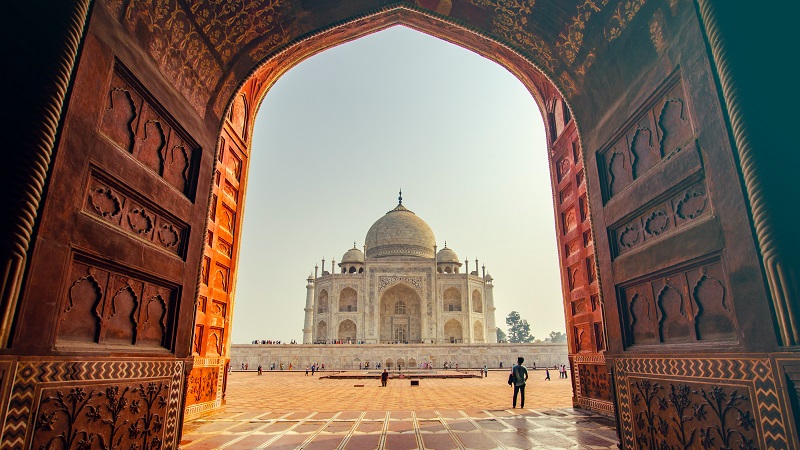Mid-pandemic, few would have highlighted India as a potential investment hotspot. Yet over the past three years it has proved an unexpected port amid some extremely stormy markets. The International Monetary Fund described it as a “bright spot on a dark horizon” and it now appears to offer a high growth alternative to its troubled neighbour China.
Indian stock markets have outpaced their developed and emerging market rivals. Over the past three years, in the investment trust sectors, only infrastructure and commodities have delivered a better return for shareholders. The average India trust is up 46.9%. That compares to an average fall of 14.2% for China trusts and 7.1% for UK All Companies trusts.
David Cornell, manager of the India Capital Growth trust, says: “Why has India surprised everyone? It’s a combination of things: India’s been through a period of political stability since [president Narendra] Modi was elected in 2014. That stability has enabled some decisive policy action. The 2014-18 period was a time of slow growth and disappointing performance, largely because the country was moving from a patronage-based system to a rules-based system. That has taken a long time to put in place.
“In 2020, we started to see signs of more resilience in the banking sector. Covid struck and India went through a turbulent time. However, it dealt with it very well.”
It did not destroy its fiscal position during the pandemic with significant spending measures with the government focused only on the very poorest.
This left India in a stronger position, poised for growth. It helped the currency, bond yields and inflation. Equally, while there were fears that India might be derailed by higher commodity prices – it is a significant importer of coal – falling costs have helped it avoid some of the inflationary pressures seen in the US, UK and Europe. Inflation has remained high, but within the Bank of India’s target range. Money supply growth has been relatively slow and the government has not been printing money. Inflation, where it exists, has been imported.
Cornell says India has been put to test and “passed with flying colours”. He adds: “This has caught a lot of investors by surprise. Most were expecting India to perform very badly, but during the period when India was fixing the roof, India’s currency reserves rose very dramatically. In the last 12 months, they could reduce the volatility of the currency.”
The corporate sector is also in good health. In response to the uncertainty in recent years, companies have deleveraged. Balance sheets are clean and companies have survived the increase in commodity prices by making changes elsewhere. They have offset the increase in costs and corporate profitability has held up reasonably well.
The problem today is that the stock market looks expensive – certainly relative to India’s emerging market peers, and also relative to many developed markets. The MSCI India, which tracks mid- and large-cap Indian companies, is trading on 23.6x current earnings. That compares to 16.3x for the MSCI World. While investors may be willing to pay a premium for the additional growth available in Indian markets, they may balk at this level of uplift.
Nevertheless, Ayush Abhijeet, adviser to the Ashoka India Equity Investment Trust, says investors need to look long term: “India provides a structural investment opportunity. Attractive demographics and a strong domestically driven growth profile have continued to underpin the investment case for India for the last 25 years.”
He adds that Indian mid-cap companies tend to be under-researched and inefficient, and therefore offer opportunities for active managers. He is still finding opportunities in private sector financials, consumer discretionary, healthcare, and materials.
Cornell also highlights the participation of domestic investors, which has driven recent market strength. This suggests that if international investors were to get involved, there could be further upside. India is currently only 15% of the MSCI Emerging Markets index, compared to China’s 31%. There is scope for those levels to re-adjust.
It is worth noting that some of the specialist investment trusts in the sector are still trading on a discount. The Ashoka India Equity Investment Trust, the top performer in the sector, is trading near par, but the India Capital Growth fund is trading on a 9.5% discount, while the Abrdn and JP Morgan trusts sit at over 20%. There is also a significant performance gap between Ashoka India and the India Capital Growth trusts, which have greater exposure to small and mid caps, and the Abrdn and JP Morgan trusts, which are more large-cap focused.
The diversity of the Indian market is also a key selling point with over 4,400 listed companies. Abhijeet points out: “India offers a well-diversified corporate universe with a fair representation from both pro- and counter-cyclical sectors, unlike some emerging market peers where one sector or company dominates the index.”
Juliet Schooling Latter, research director at FundCalibre says: “The Indian market is relatively uncorrelated to the Chinese market with a correlation of just 0.27 over the last five years. This means investing in India has the advantage of acting as a diversifier to overall Asian and emerging market exposure which is typically dominated by China.”
India may be expensive, but it is one of the very few bright spots in the global economy today and, as such, may justify its premium. It has had a strong run, but there is plenty to suggest that the structural advantages of the Indian economy and stock market could endure.










